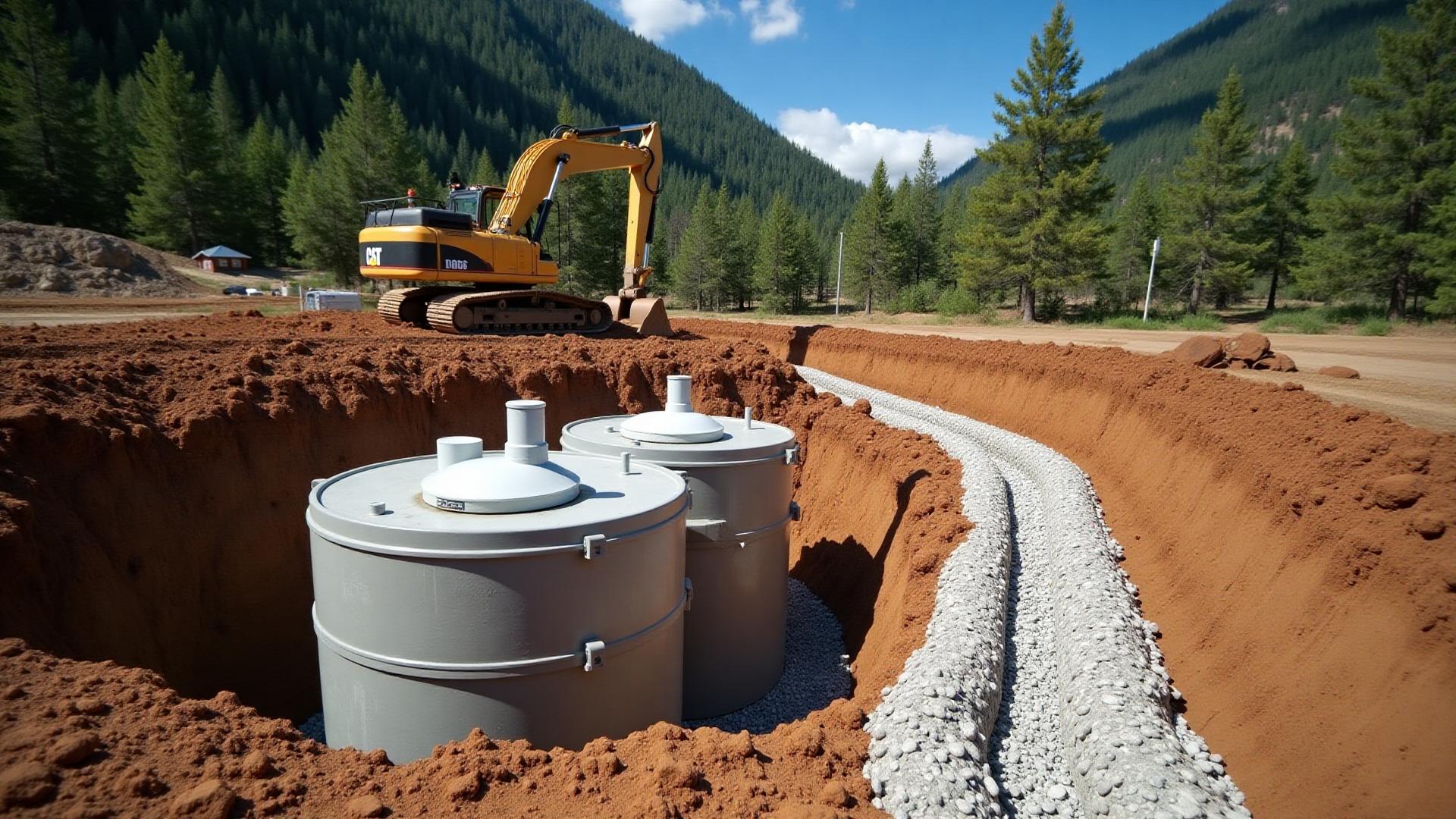Installing a septic system is one of the most critical components of rural property development. This comprehensive guide covers everything from planning to maintenance.
Understanding Septic Systems
A septic system treats wastewater on-site through natural processes. The main components include:
System Components
**Septic Tank**: Primary treatment chamber**Drainfield**: Secondary treatment area**Distribution Box**: Spreads effluent evenly**Piping**: Connects all componentsSite Evaluation
Before installation, several factors must be evaluated:
Soil Testing
Percolation Test: Measures water absorption rateSoil Profile: Determines soil compositionDepth to Bedrock: Ensures adequate treatment depthWater Table: Must be below drainfieldSite Conditions
Slope and drainage patternsDistance to wells and water bodiesProperty boundaries and setbacksAccess for maintenance equipmentTypes of Septic Systems
Choose the right system for your property:
Conventional Gravity System
Most common and cost-effectiveRelies on gravity flowRequires suitable soil and slopeCost: $8,000-$15,000Pressure Distribution System
Uses pump for even distributionWorks on flat or challenging terrainMore reliable performanceCost: $10,000-$18,000Mound System
Built above ground levelFor poor soil or high water tableRequires imported sand and soilCost: $15,000-$25,000Advanced Treatment Systems
Enhanced treatment capabilityRequired in sensitive areasHigher maintenance needsCost: $20,000-$35,000Permitting Process
Septic installation requires permits:
**Application**: Submit site plan and soil test results**Review**: Health department evaluates proposal**Approval**: Receive permit with conditions**Inspections**: Schedule required inspections**Final Approval**: System passes all inspections**Timeline**: 4-8 weeks for permit approval
Installation Process
Phase 1: Excavation (Days 1-2)
Mark tank and drainfield locationsExcavate tank pit and trenchesPrepare subgrade and levelPhase 2: Tank Installation (Day 2-3)
Set tank on gravel bedInstall inlet and outlet bafflesConnect to house plumbingBackfill around tankPhase 3: Drainfield (Days 3-4)
Place distribution boxInstall drainfield pipingAdd drain rock and geotextileCover with appropriate soilPhase 4: Final Grading (Day 5)
Restore site contoursEstablish grass or native plantsMark tank and cleanout locationsSizing Requirements
System size depends on household capacity:
1-2 bedrooms: 750-1,000 gallon tank3 bedrooms: 1,000 gallon tank4 bedrooms: 1,250 gallon tank5+ bedrooms: 1,500+ gallon tankDrainfield size varies by soil type and local codes.
Cost Breakdown
**Total Investment**: $10,000-$25,000 typical
Permits and engineering: $1,500-$3,000Excavation: $2,000-$4,000Tank and materials: $2,000-$5,000Drainfield: $3,000-$8,000Labor and equipment: $2,500-$5,000Maintenance Tips
Protect your investment with proper care:
Regular Maintenance
Pump tank every 3-5 yearsInspect annually for issuesKeep records of maintenanceWatch for warning signsDo's and Don'ts
DO:
Conserve waterUse septic-safe productsDivert roof drainage awayKeep good maintenance recordsDON'T:
Flush non-biodegradablesUse excessive chemicalsDrive over drainfieldPlant trees near systemCommon Problems
Watch for these warning signs:
Slow drains throughout houseSewage backup in fixturesWet spots over drainfieldFoul odors near tank or fieldLush grass over drainfieldWhen to Call Professionals
Contact experts if you notice:
System backup or overflowDrainfield saturationCracked or damaged tankConsistent slow drainageLong-Term Considerations
Plan for system longevity:
Lifespan: 25-30 years with proper careReplacement: Budget for eventual replacementUpgrades: Consider when remodelingProperty Value: Well-maintained systems add valueConclusion
A properly installed and maintained septic system provides reliable wastewater treatment for decades. Working with experienced professionals ensures code compliance and system longevity.
We specialize in septic system installation throughout the Inland Northwest, from initial permitting through final inspection and beyond.
